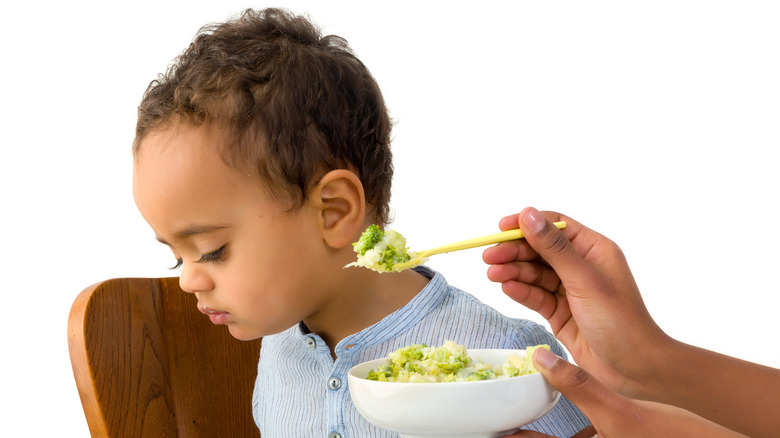What Is A Food Aversion?
It's no secret that children can be picky eaters. Rare is the parent who can feed their child anything and expect a peaceful meal. Some kids won't eat meat unless it's in nugget form, while others won't touch fruit if it's the only thing in the house. However, no matter how specific the child's preferences are, picky eating is far different from the condition known as food aversion.
The Neurological and Physical Abilitation Center (NAPA) defines food aversion as it presents itself in children. Children are considered averse to a certain food when it is developmentally appropriate for them to eat the food, but they still refuse it. Food aversion is more common in children with sensory processing disorders (SPDs) because children may have negative reactions to feeding sensations — such as food being too hot or liquids being swallowed too quickly — that caretakers are unaware of, according to NAPA Center.
Aversions run deeper than picky eating
Food aversion can be further distinguished from picky eating through the range of foods a child is willing to eat. Picky eaters will eat at least 30 different foods while food-averse children will eat fewer than 20 (per NAPA Center). Some tell-tale signs of food aversion in infants and children include an arched back when feeding, crying or fussiness when a bib is placed around their neck, or appearing hungry but refusing to eat, per Kids Feeding Team, a specialist food clinic based in the United Kingdom. Food aversion leads to a restrictive diet, one that is possibly nutritionally lacking. Help is available, however, for children who have food-aversion issues.
Treatment usually comes in the form of feeding therapy, according to NAPA Center. The organization is vague on the specifics, as it is not something that should be carried out without a trained professional present. NAPA Center does say, however, that it can involve addressing eating behaviors, motor skills, or habits. The organization also encourages parents to try and make mealtimes positive experiences at home through modeling positive behaviors and being patient as the family learns to cope with the food aversion.


